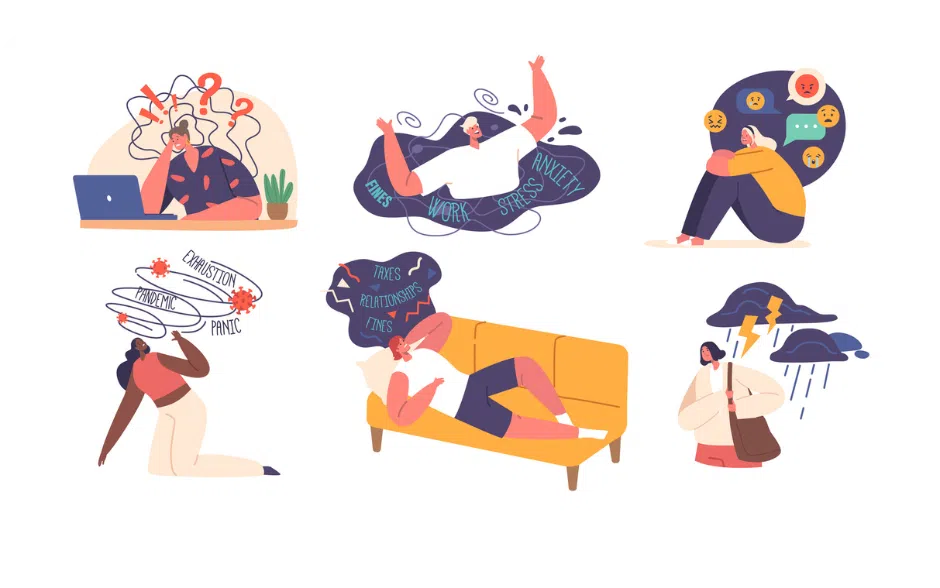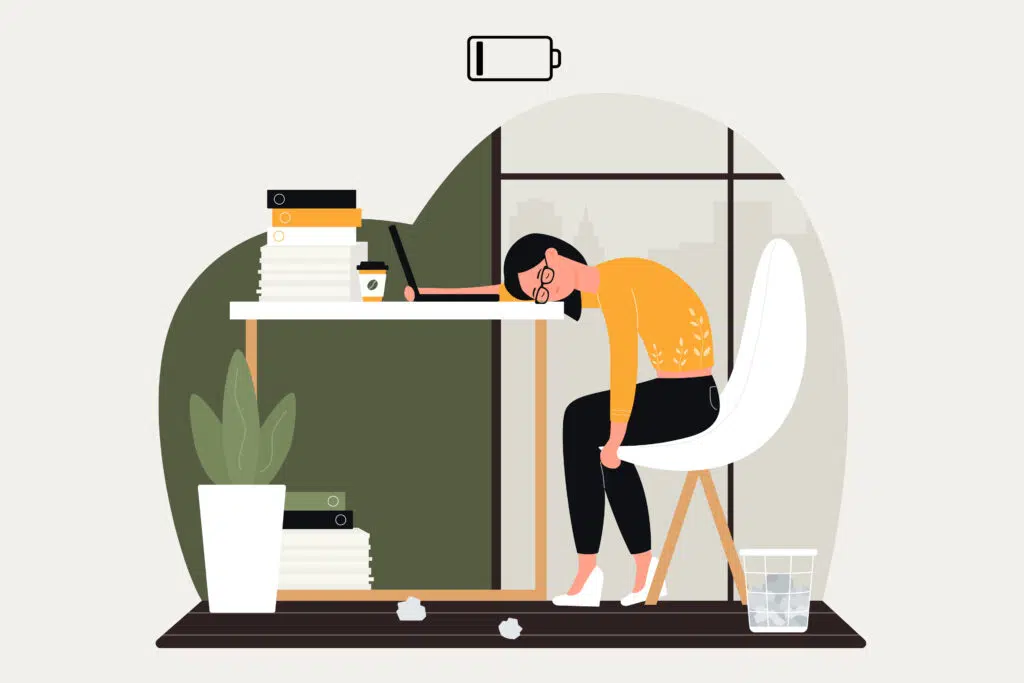The Different Types of Therapy (Explained)

If you’re thinking about starting therapy, you will have encountered different types, approaches, and modalities. Therapy is a deeply personal journey, it can help to address mental health challenges, enhance coping skills, and improve well-being. However, the best type of therapy to help you achieve that will depend on your needs, symptoms, goals, and preferences.
In this guide, we’re going to break down different types of therapy modalities and approaches so you can make a more informed decision about your mental health and get the support you need.
Understanding Therapy Modalities
Even for professionals in the field, the terminology and information surrounding therapy and mental health can be confusing and overwhelming. Many people wonder what kind of therapist they need or whether a specific therapy, such as Cognitive Behavioral Therapy (CBT), is right for them. Ultimately, most individuals are looking for the most effective therapy for them. Understanding therapy modalities helps create a clearer picture of therapy so you can make more informed decisions about your mental well-being.
A therapy modality refers to the method of treatment. Let’s consider anxiety. CBT is one of many effective therapies and is commonly used for anxiety. The cognitive-behavioral approach focuses on the relationship between feelings, thoughts, and behaviors. Cognitive behavioral therapy (CBT) is a therapy modality that applies this approach in a clinical setting.
A therapist trained in CBT might use techniques like cognitive restructuring to challenge anxious thoughts, exposure therapy to address phobias, and relaxation techniques to manage the physical symptoms of anxiety.
CBT is just one example; there are many other effective therapies for anxiety and other mental health challenges. Different types of therapy use a variety of tools and techniques to help individuals reach their goals. That goal could be to manage anxiety, treat a mental health condition, or deal with a fear of flying.
Why Therapy Modalities Matter in Mental Health
You will hear that there is no such thing as a one-size-fits-all approach to therapy. Some approaches are well-suited for specific mental health issues, while others are focused on broader goals like personal growth or improving relationships. For example, dialectical behavior therapy (DBT) is often helpful for those with borderline personality disorder, while cognitive behavioral therapy is commonly used to treat anxiety and depression.
When it comes to therapy, you also have to consider that people have different preferences, learning styles, and communication patterns. For example, one person may prefer the structure of CBT, while another may prefer a more open-ended or explorative approach.
Because mental health is complex, what works for one person may not resonate or be effective in treating another. A therapist can help in a variety of ways by tailoring their treatment to you, your needs, goals, and preferences. That’s why therapy modalities are important because it means that an individual can find the treatment that best aligns with their needs and preferences.
Exploring Common Approaches to Therapy
The approach in therapy is the theoretical framework a therapist uses. Think of it as a lens a therapist looks through. A therapeutic approach helps a therapist understand their clients and work to create a solution using the theory as a roadmap.
Here are some common approaches to therapy:
- Psychodynamic: Explores unconscious patterns and past experiences to understand present behaviors and relationships.
- Cognitive Behavioral: Focuses on identifying and changing negative thought patterns and developing healthier coping mechanisms.
- Humanistic: Emphasizes personal growth, self-acceptance, and achieving your full potential. Gestalt therapy is a type of humanistic therapy that helps individuals focus on the present to support healing.
- Existential: Explores questions of meaning, purpose, and existence to help individuals find greater fulfillment.
- Systems: Examines individuals within the context of their relationships and social systems to improve communication and resolve conflicts.
- Mindfulness-Based: Integrates mindfulness practices to enhance awareness, emotional regulation, and acceptance of thoughts and feelings.
- Trauma-Informed: Recognizes the impact of trauma and creates a safe space to process traumatic experiences and develop resilience.
Mindfulness-based and trauma-informed are not therapeutic approaches in the same way as the others. Instead, they are a way of looking at a situation in a certain way and can be integrated into several therapeutic approaches. For instance, a therapist might use a mindfulness-based approach within a cognitive-behavioral therapy session.
Specialized Therapy Techniques for Unique Needs
It’s common for a therapist to integrate different approaches and therapeutic techniques to treat a mental health condition and help you achieve your goal. There are different types of therapies that all use their own set of techniques and tools to help. Depending on your needs, one may be a better fit than the other.
Here are some types of therapy and the techniques that a therapist may use during a typical session:
Cognitive Behavioral Therapy (CBT)
CBT is commonly used for anxiety disorders and depression, but it can be helpful for other mental health challenges. A therapist will use techniques like cognitive restructuring and exposure therapy. Cognitive behavioral therapy involves helping the individual to identify and challenge negative thoughts and behaviors and replace them with more balanced ones.
Dialectical Behavioral Therapy (DBT)
DBT focuses mainly on emotional regulation and mindfulness. It’s often used in the treatment of borderline personality disorder and other conditions involving emotional dysregulation. DBT can be a longer form of therapy because of the complex issues it addresses, but the duration will depend on the individual case. A therapist will use a number of techniques to help an individual take control of their emotions.
Eye Movement Desensitization and Reprocessing (EMDR)
EMDR is designed to help individuals process and heal from trauma. This type of therapy uses bilateral stimulation, like eye movements, as part of a structured process. The aim is to work through traumatic memories and experiences and lower the negative emotional impact the trauma has on a person’s life.
Acceptance and Commitment Therapy (ACT)
ACT is often used for those struggling with anxiety and depression. The aim of ACT is to help individuals accept difficult emotions and thoughts rather than fight them and live a life that’s true to them and their values.
Emotion-Focused Therapy (EFT)
Emotion-Focused Therapy (EFT) emphasizes becoming more aware of, accepting, and working through emotions. It can be particularly helpful for relationship issues (especially in its couples therapy form, EFT-C) and can also be used to address trauma. In EFT, individuals explore their emotional patterns, work through emotional blocks, and learn to process emotions in healthier ways.
Mindfulness-Based Cognitive Therapy (MBCT)
A form of CBT, MBCT integrates mindfulness practices. At its core, it aims to cultivate present-moment awareness without judgment and foster acceptance of thoughts and feelings. It’s often used to treat anxiety, depression, and stress.
How to Choose the Best Therapy Modality for You
If you’re new to therapy or in the initial stages, learning more about therapy and the process can help you feel calmer and more in control. To figure out the best therapy modality, it’s a good idea to start with your needs and goals. Think about your answers to the following questions:
- What are you struggling with? Is it anxiety, burnout, stress, problems in your relationship, or something else?
- What would you like to get out of therapy? Are you looking to manage anxiety symptoms? Are you dealing with a big life change and struggling to cope?
The answer to these questions will help set you on the right path. Some therapists will be experts in certain mental health conditions or specialties. You can then look at what modality they use and think about what resonates with you the most. Do you prefer a modality that focuses on thoughts and behavior? Or would you prefer a modality that focuses on personal growth, like humanistic therapy?
If you’re dealing with a specific condition, then certain modalities may be a better fit for you. For example, exposure therapy, a technique often used within cognitive-behavioral therapies, can be helpful for individuals who experience phobias and obsessive-compulsive disorder (OCD), as well as other anxiety disorders.
Your preferences and availability also affect your decision. Some modalities are more short-term and focused, while others require a greater time commitment.
Partnering with a Therapist to Find the Right Approach
Therapists are knowledgeable in a variety of different therapy modalities and can help you to understand which approach is most likely to be more effective or to suit your needs the most.
Your therapist is trained to understand your needs, help you identify underlying issues, and consider your preferences so they can tailor an approach to you. They will explain the differences between approaches and tell you why a certain approach may be a better fit for you.
A therapist is there to guide you in finding the right approach to therapy. They will combine their expert knowledge and experience to create a tailored treatment plan to give you the best chance of healing and growth.
You don’t need to be an expert in therapy whatsoever to get the help you need. But, learning about therapy can make you feel less anxious about seeking help and can demystify therapy, encouraging more people to get the help they need. Knowing some basic therapy terms can help you communicate with your therapist and help you ask questions about their approach, experience, and how they can help you.
Where to Start
Whether you’re beginning your search for a therapist or just considering therapy, choosing a therapist you trust is essential. Thriving Center of Psych simplifies the process of finding a therapist that fits your needs. All our therapists are highly qualified, with specialist training and experience.
When you’re considering therapists, review their profiles and ask questions about their approach and the specific modalities they use. If you have a particular type of therapy in mind, ask about their experience with it and what a typical session might look like.
Finding the right therapist is an investment in your well-being, and we’re here to support you in that process. That is exactly why we created our free 5 minute, therapist match questionnaire!
This questionnaire has helped match thousands of people with their ideal therapist. We’ll help you identify the best therapist for your needs and goals so you can feel empowered to begin your journey.
Click here to take our 5 minute questionnaire and get matched with the ideal therapist for your specific challenges, needs, and goals.

How to Overcome Procrastination and Anxiety
Procrastination is a very typical human experience. At some point or another, we’re all guilty of putting off that task we know is important. Maybe it’s household chores, filling your taxes, paying bills, or some other mind-numbingly boring task.

How to Build a Consistent Routine That Combats Depression
Depression can feel like a pit you can’t escape from, but know that depression is treatable with the right help. A basic daily ritual encourages healthy habits like a regular sleep schedule, healthy food choices, and exercise that support mental health.

How to Manage Stressful Life Transitions and Events
From getting into college or having a baby to splitting from a spouse or experiencing the death of a loved one, life can surprise you with big wins and tear you down with loss. Life is filled with transitions, some happy, others stressful and difficult.

How Long Does it Take to Recover from Burnout?
If you’ve reached burnout, it describes a state of complete emotional, physical, and mental exhaustion. Between heavy workloads, toxic work environments, economic uncertainty, and a poor work-life balance, burnout is a very real problem that can affect all aspects of your health.

